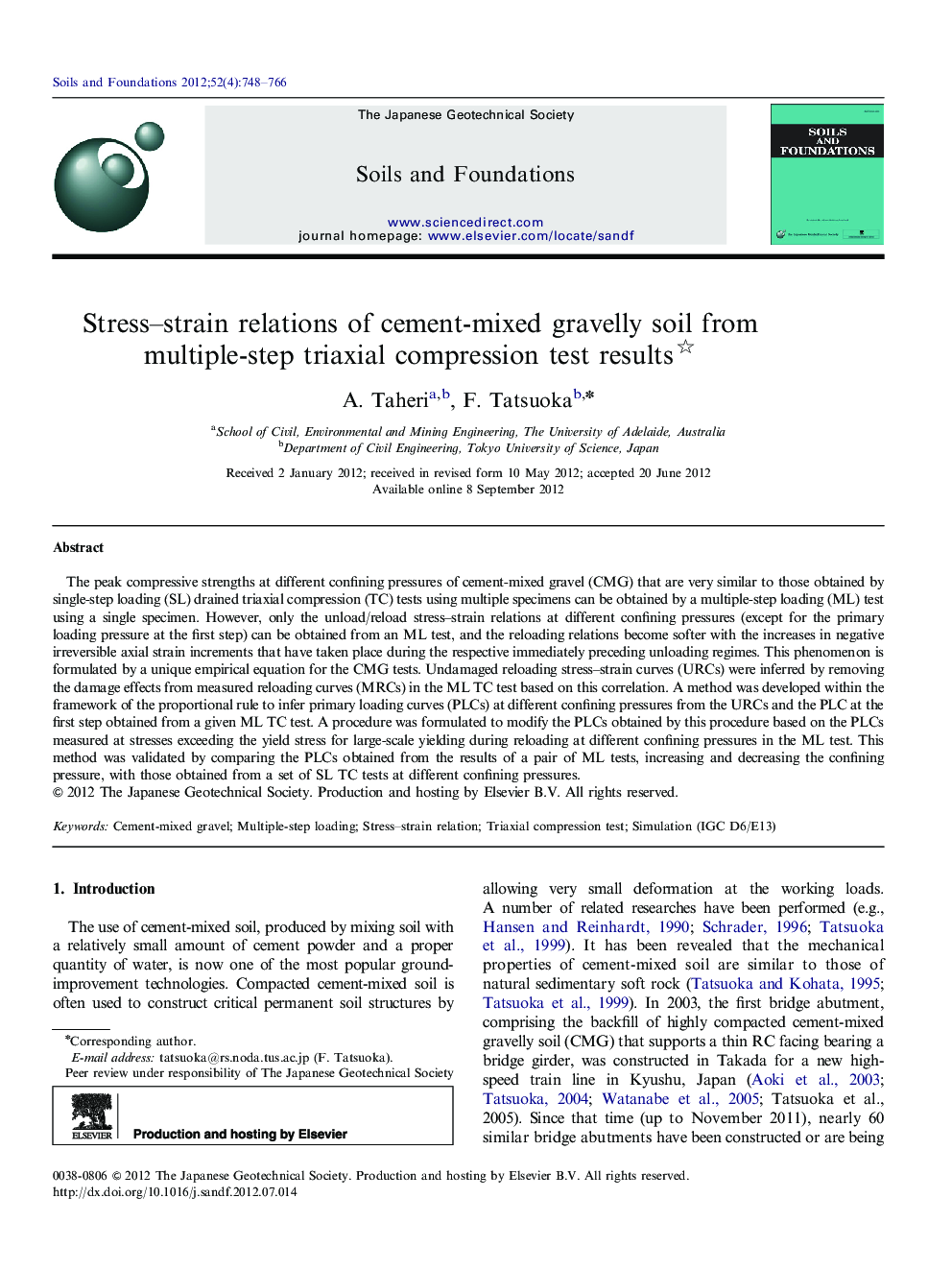| Article ID | Journal | Published Year | Pages | File Type |
|---|---|---|---|---|
| 307409 | Soils and Foundations | 2012 | 19 Pages |
The peak compressive strengths at different confining pressures of cement-mixed gravel (CMG) that are very similar to those obtained by single-step loading (SL) drained triaxial compression (TC) tests using multiple specimens can be obtained by a multiple-step loading (ML) test using a single specimen. However, only the unload/reload stress–strain relations at different confining pressures (except for the primary loading pressure at the first step) can be obtained from an ML test, and the reloading relations become softer with the increases in negative irreversible axial strain increments that have taken place during the respective immediately preceding unloading regimes. This phenomenon is formulated by a unique empirical equation for the CMG tests. Undamaged reloading stress–strain curves (URCs) were inferred by removing the damage effects from measured reloading curves (MRCs) in the ML TC test based on this correlation. A method was developed within the framework of the proportional rule to infer primary loading curves (PLCs) at different confining pressures from the URCs and the PLC at the first step obtained from a given ML TC test. A procedure was formulated to modify the PLCs obtained by this procedure based on the PLCs measured at stresses exceeding the yield stress for large-scale yielding during reloading at different confining pressures in the ML test. This method was validated by comparing the PLCs obtained from the results of a pair of ML tests, increasing and decreasing the confining pressure, with those obtained from a set of SL TC tests at different confining pressures.
